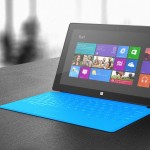![]()
There’s a new screen protector from Singapore that not only saves your phone from scratches but turns the screen into a 3D display capable of showing images and videos that pop out at you.
Called EyeFly 3D, the plastic film promises to turn any smartphone into a 3D display, once it is carefully pasted on the screen. Though it looks no different from regular S$5 screen protectors, the film is actually fitted with half a million tiny lenses that let you view 3D video content, say, from YouTube.
That, according to the company selling it, sets it apart from other films promising 3D on the small screen. Nanoveu chief executive Alfred Chong told reporters today at a launch that the 0.1mm-thin film is unique in its lenticular structure, which differs from rivals using a technique called parallax barrier.
The result, he added, is that there is none of the annoying moire pattern seen on other 3D film. Plus, users would not see any degradation in regular 2D images, he promised.
The 3D technology is the culmination of a two-year project by Temasek Polytechnic, coupled with nano-scale manufacturing capabilities from the Institute of Materials Research and Engineering (IMRE).
For now, the film works only with the iPhone 5, though an Android version is in the works. An app helps to switch between the 3D mode and regular 2D.
During demos today, the app worked extremely well, allowing users to set the right depth of the 3D feature so that videos looked just right from a given viewing angle.
But what of the small issue of 3D having failed to take off, even with phones from HTC and LG that had the feature built right in?
Chong said the film, being an easy add-on, will prove more attractive than expensive phones that users had to invest heavily in to enjoy the 3D feature.
He also argued that more 3D content, say, from a collaboration his company announced today with Singapore’s Tiny Island Productions, will attract users to a format that has seen slow take-up.
Price is yet another barrier. The EyeFly 3D may have to convince not just geeks and early adopters – but regular users – that its US$34.95 price comes with a feature that people will actually use.






